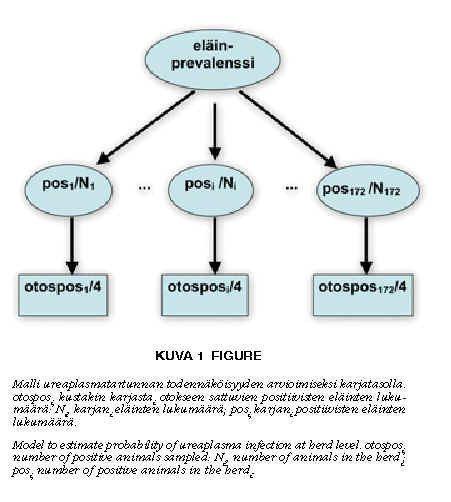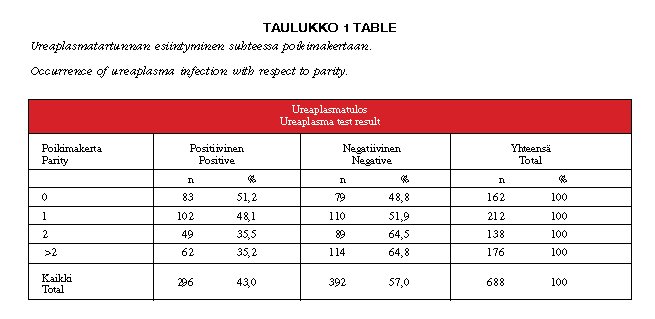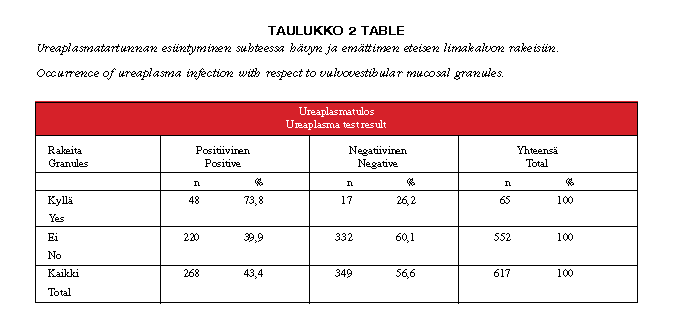
We studied the prevalence of Ureaplasma diversum and Mycoplasma bovigenitalium infections in dairy cattle and insemination bulls, and their association with vulvovestibulitis and non-return rate. Altogether 172 farms with 4 504 cows and heifers in eastern Finland were visited. Four heifers or cows were examined on each farm (688 cattle) close to the time of insemination for the presence of abnormal vaginal discharge or granules. Vulvovaginal swabs were taken. They, as well as sperm samples, were cultured in ureaplasma and mycoplasma broth, and the microbes were detected by a specifi c PCR. The prevalence of ureaplasma in the animal population was 43% (CI 95%: [39%, 47%]). At least one out of four samples was positive in all free-stall barns (n = 22) and in 82% of tied-stall barns (n = 150). More samples from each farm were positive for ureaplasma in free-stall barns than in tied-stall barns. The farm prevalence was almost 100% for the farms with 10 or more cows. Heifers and primiparous cows were more often infected than pluriparous cows (p = 0.003). Animals with granular vulvovestibulitis were more often positive for ureaplasma (74%) than those without signs (40%) (p < 0.001). Abnormal vaginal discharge was not statistically associated with the infection. Ureaplasma was detected in 83% of fresh sperm samples taken from 40 insemination bulls. We tested 31 of the positive sperm samples, which had been frozen, and found that 26% were again positive. From bulls used earlier in semen production, we analysed 39 frozen sperm samples, of which 36% carried ureaplasma. The non-return rate did not differ between positive and negative bulls. All the samples were negative for M. bovigenitalium. U. diversum is very common in Finland and seems to be associated with granular lesions.


